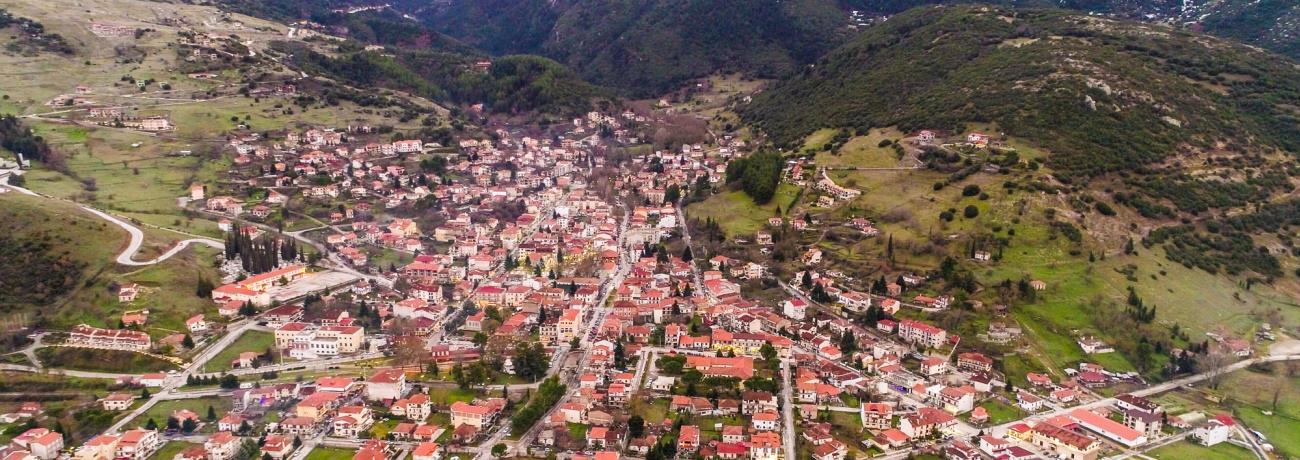Τα Καλάβρυτα, πρωτεύουσα της
επαρχίας
Καλαβρύτων, είναι μία πόλη που γεωγραφικά ανήκει στην
Αχαϊα
αλλά στην πραγματικότητα ανήκει σε όλους τους Έλληνες. Μία πόλη παγκόσμιο σύμβολο
της Ελευθερίας.
Από τα Καλάβρυτα ξεκίνησε το 1821 η Επανάσταση των Ελλήνων κατά της
Τουρκοκρατίας. Στην ιστορική
Μονή
της Αγίας Λαύρας φυλάσσεται το Λάβαρο του 1821. Κοντά στα Καλάβρυτα βρίσκεται
η
Ιερά Μονή Μεγάλου Σπηλαίου,
το καταπληκτικότερο προσκύνημα της Ορθοδοξίας στην
Πελοπόννησο.
Η Μονή, κτισμένη το 326 μ.Χ. σε υψόμετρο 924 μέτρων, καταστράφηκε τέσσερις φορές.
Πάντα όμως σωζόταν η Αγία Εικόνα της Θεοτόκου, η οποία κατά την παράδοση αποτελεί
έργο του Ευαγγελιστή Λουκά.
Τα Καλάβρυτα κατά την διάρκεια του Β’ παγκοσμίου πολέμου έγιναν
στόχος των γερμανικών δυνάμεων κατοχής. Το 1943 οι Γερμανοί εκτέλεσαν όλους τους
άνδρες της πόλης και έκαψαν τα σπίτια και τις εκκλησίες. Ένας μεγάλος Σταυρός
πάνω από την μαρτυρική πόλη θυμίζει στον επισκέπτη το Ολοκαύτωμα των Καλαβρύτων.
Σήμερα τα Καλάβρυτα είναι μία γραφική πόλη με εξαιρετικές φυσικές
ομορφιές και αφετηρία για περιηγήσεις στις γύρω περιοχές. Εδώ καταλήγει ερχόμενο
από το
Διακοπτό το τραινάκι
του Οδοντωτού.
Στο
χιονοδρομικό
κέντρο των Καλαβρύτων οι λάτρεις των χειμερινών σπορ συναντούν μία από τις
καλύτερες πίστες της
Ελλάδας,
ενώ σε απόσταση 17 χιλιομέτρων από την πόλη βρίσκεται το θαυμάσιο
"Σπήλαιο
των Λιμνών", ένα σπάνιο δημιούργημα της φύσης. Το μοναδικό σπήλαιο του
κόσμου που οι λίμνες του είναι κλιμακωτές, σε τρία επίπεδα.
Στην ευρύτερη περιοχή των Καλαβρύτων ο επισκέπτης έχει την ευκαιρία
να θαυμάσει ιστορικούς και αρχαιολογικούς χώρους όπως οι
Αρχαίοι
Λουσσοί, το Κλήμα του Παυσανία, η αρχαία πόλη του
Κλείτορα,
το Κάστρο της Ωριάς, η Χελωνοσπηλιά αλλά και τόπους με ξεχωριστή φυσική ομορφιά
όπως οι πηγές του
Λάδωνα
και του Αροανείου.
Ολόγυρα από τα Καλάβρυτα, σκαρφαλωμένες στις πλαγιές του
Χελμού
και του
Ερύμανθου, υπάρχουν
75 Κοινότητες και οικισμοί, οι περισσότεροι κτισμένοι μέσα σε δάση ελάτων και
πλατανιών.
Η
Δάφνη και η
Κλειτορία είναι δύο από τις
πιο γραφικές κωμοπόλεις της
Αχαϊας
με πλούσιες πνευματικές και εμπορικές δραστηριότητες αλλά και φυσικές ομορφιές.
Ολόκληρη η
επαρχία
Καλαβρύτων - από τα
Τριπόταμα,
το
Λειβάρτζι, τη
Βλασία
ως τα Καλάβρυτα - με τις συνεχείς εναλλαγές των τοπίων, τις ειδυλλιακές και γραφικές
γωνίες της, την ιδιαίτερη αρχιτεκτονική και την συνεχώς αναπτυσσόμενη τουριστική
υποδομή αποτελεί μία περιοχή που ενθουσιάζει και τον πιο απαιτητικό επισκέπτη.
Το κείμενο (απόσπασμα) παρατίθεται το Μάρτιο 2004 από τουριστικό φυλλάδιο
της Νομαρχίας Αχαϊας
(1999).
